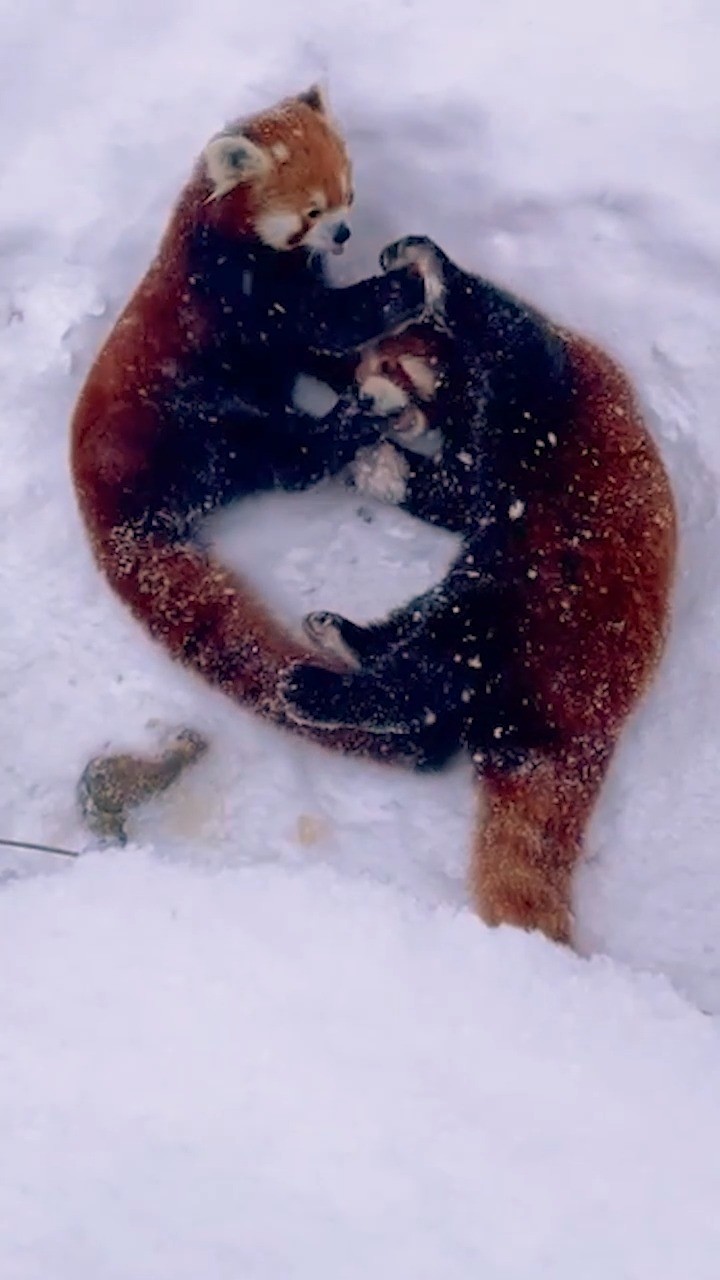- The unique adaptations of red pandas for survival in cold climates, such as their thick double-layered fur.
- The playful behavior of red pandas, including instances when they wrestle, forming heart shapes in the snow.
- The role of responsible zoo management in providing environments that mimic natural habitats for red pandas.
- Efforts in wildlife conservation to protect red pandas from deforestation and habitat loss.
- Insights from carnivore care specialists on how red pandas are cared for in captivity.
Red pandas, scientifically known as Ailurus fulgens, have fascinated the world with their unique adaptations and charming demeanor. These animals are superbly adapted to survive in the cold, harsh climates of the Himalayas, where they originate. Covered in thick, reddish-brown fur with a woolly undercoat, red pandas are equipped to handle extreme cold. This double-layer of fur acts as an excellent insulating feature, ensuring their body stays warm by trapping heat, while also helping them blend into the white, snowy surroundings during the winter. Interestingly, even the solesthem of these small yet formidable animals are covered with fur, offering additional insulation and traction on slippery surfaces. The only exception is their nose, where the fur is absent.
In the snowy Himalayas, the playful nature of red pandas can appear as though these creatures are performing a wonderous dance. Particularly, the sight of Red panda’s Spring and Ketu playfully wrestling has captured the hearts of many observers. As they engage in these playful bouts, they often seem to form a heart shape, enchanting viewers with their interactive display. This behavior is not just about play; it is a crucial part of their social interactions and physical exercise. Engaging in such activities helps in fine-tuning their communication skills and building stronger relationships, fundamental aspects for their survival both in captivity and the wild.
Zoos play a critical role in the conservation and well-being of red pandas. Responsible management involves creating enclosures that mimic their natural habitats to the greatest extent possible. This involves not just providing physical space but also climatic conditions and diet that resemble those available in their native environments. The snow-covered enclosures allow red pandas to indulge in their innate behaviors, like climbing and wrestling, which are essential for their mental and physical health. The aim is to create environments where these animals can express natural behaviors, thus leading to a better quality of life.
Wildlife conservation efforts are essential in safeguarding the future of red pandas, as these creatures are classified as endangered. Deforestation, habitat loss, and fragmentation are major threats they face. The Asian forests they inhabit are dwindling, jeopardizing their existence. Conservationists emphasize the importance of protecting existing habitats and restoring degraded ones to provide red pandas with the necessary resources to thrive. Beyond habitat protection, breeding programs in captivity are also vital. These initiatives aim to increase population numbers while maintaining genetic diversity, ensuring the species’ long-term survival.
An insight into the intricate care provided in captivity can be gleaned from carnivore care specialists like SarahRose. Specialists like her dedicate their efforts to understanding the specific needs and dynamics of red pandas in captivity. Through carefully crafted diets that mimic what they would naturally consume and routine health checks, specialists can enhance the well-being of captive pandas. These steps are crucial in reproducing environments conducive to the red pandas’ overall health and well-being.
Red panda’s Spring and Ketu’s heart-shaped wrestling in the snow is more than just endearing; it holds profound implications for understanding these animals’ natural behaviors and the importance of playful interactions. Adequately familiarizing ourselves with their survival adaptations, the responsibilities of zoo management, and the critical need for active wildlife conservation efforts is necessary to ensure the continued existence of these striking creatures, adored by many around the globe.
Through continued research, fieldwork, and public education, we can deepen our collective understanding of the challenges faced by red pandas and the steps required to overcome them. By doing so, we ensure that future generations can enjoy observing these magnificent beings and appreciate the intricate balance of ecosystems where they play an irreplaceable part.
*****
Source Description
Red panda’s Spring and Ketu make the shape of a heart when wrestling together in the snow! 🥺❤️
Red pandas have a thick double-layer of fur that acts as insulation and helps them stay warm in their native Himalayan climate. In fact, their entire body (including the bottoms of their feet) is completely covered in fur, except for their nose! Now is the perfect time to come see the red pandas enjoying the snowy weather.
Video from carnivore care specialist SarahRose


